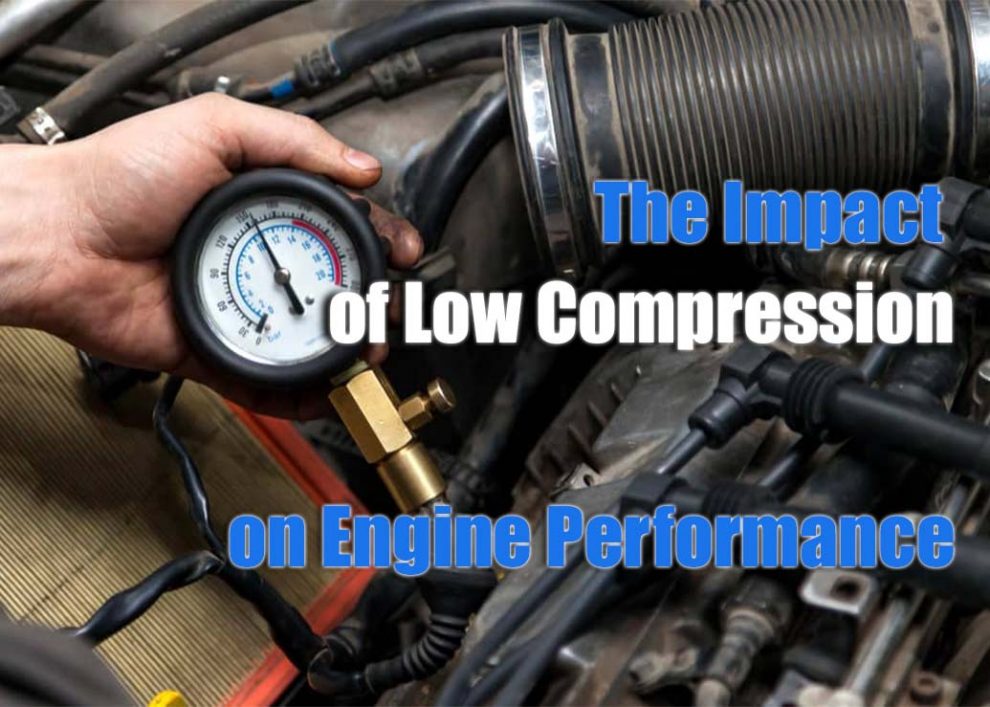Engine compression refers to the process of compressing the air-fuel mixture in a combustion chamber, which is crucial for the efficient operation of an internal combustion engine. A proper compression ratio is vital for maximizing engine power, fuel efficiency, and overall performance. Low compression can result from various issues, including worn or damaged engine components, and may lead to decreased engine performance, increased emissions, and even engine failure in severe cases.
Causes of Low Compression in Engines
 Low compression in engines can stem from several factors. Common causes include worn piston rings, which can allow combustion gases to escape and reduce compression; damaged cylinder head gaskets, which can cause coolant leaks and compromise the seal between the cylinder head and engine block; and leaking or stuck valves, which can prevent proper sealing of the combustion chamber. Additionally, a cracked or warped cylinder head, as well as a damaged or worn camshaft, can contribute to low compression issues.
Low compression in engines can stem from several factors. Common causes include worn piston rings, which can allow combustion gases to escape and reduce compression; damaged cylinder head gaskets, which can cause coolant leaks and compromise the seal between the cylinder head and engine block; and leaking or stuck valves, which can prevent proper sealing of the combustion chamber. Additionally, a cracked or warped cylinder head, as well as a damaged or worn camshaft, can contribute to low compression issues.
Symptoms of Low Compression
A variety of symptoms can indicate low compression in your engine. These may include poor engine performance, decreased power, and reduced fuel efficiency. Other signs can be rough idling, misfires, and difficulty starting the engine. In some cases, low compression can lead to engine stalling or even failure. If you suspect low compression, it’s essential to diagnose and address the issue promptly to minimize the risk of further engine damage.
Diagnosing Low Compression Issues
To diagnose low compression issues, a compression test is typically performed using a compression gauge. This test measures the pressure generated by each cylinder during the compression stroke, helping to identify any discrepancies or issues. A leak-down test can also be performed to determine the source of the leak, such as worn piston rings, leaking valves, or a damaged head gasket. If you’re unsure about how to perform these tests or interpret the results, consult a professional mechanic for assistance.
Repairing and Preventing Low Compression Problems
Repairing low compression issues may involve replacing worn or damaged engine components, such as piston rings, valves, or head gaskets. In some cases, more extensive repairs or engine rebuilding may be necessary. Once the underlying issue has been addressed, it’s essential to take steps to prevent future low compression problems. Regular engine maintenance, including oil changes, filter replacements, and inspections of critical components, can help detect and resolve issues before they escalate. Additionally, using high-quality engine oil and adhering to your vehicle manufacturer’s recommended maintenance schedule can help maintain proper engine compression and performance. Considering upgrades like the Best Cold Air Intake for Toyota Tacoma can also contribute to maintaining optimal compression levels. This intake system enhances the quality of air entering the engine, which can help improve combustion and prevent compression issues.
In conclusion, understanding the importance of engine compression and being aware of the causes, symptoms, and solutions for low compression can help you keep your engine running efficiently and reliably. Regular maintenance and prompt attention to potential issues are key to preventing low compression problems and ensuring your engine remains in peak condition for years to come.


Add Comment